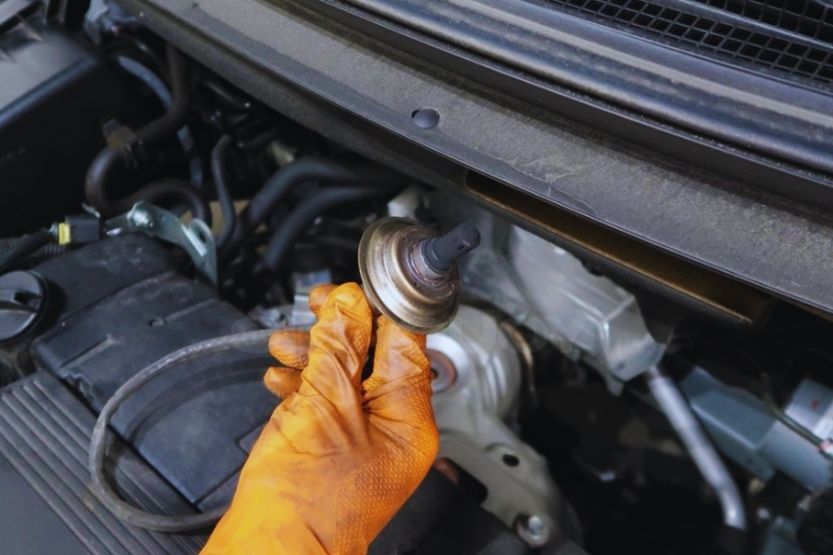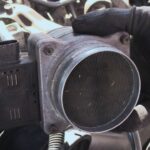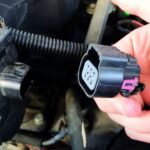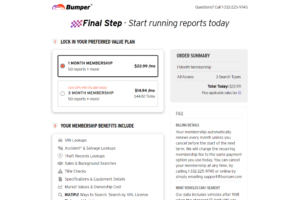If you are not very familiar with it, trouble codes in an OBD scanner can be challenging to understand. The scanner says there’s an issue with an O2 sensor in bank 1. How can you find the bank 1 sensor 1 location – upstream or downstream?
In a modern engine, sensor 1 is located upstream. It is the upstream oxygen sensor. This sensor measures the oxygen content coming out of the exhaust. It provides this information to the car’s computer control unit to determine the air/fuel ratio adjustments.
Sensor 1 is the one that is closest to the engine, making it the upstream oxygen sensor. There’s another oxygen sensor in the engine. This is sensor 2 located downstream, making it the downstream oxygen sensor.
On most in-line engines, the bank 1 sensor 1 is located the front side of the engine, near the cylinder head.
Read on to learn more about the location of bank 1 sensor 1, its important function in an engine, and its relation to other parts of the engine.
Bank 1 Sensor 1 Location

Sensor 1 Measures the Oxygen in the Exhaust
Sensor 1 is the upstream oxygen sensor in modern internal combustion engines. This sensor measures the oxygen in the exhaust.
Send Info to the Onboard Computer
The sensor sends this information to the onboard car computer to make adjustments in the air to fuel ratio inside the combustion chambers.
Upstream Oxygen Sensor
Sensor 1 is the oxygen sensor that is nearest to the engine. That’s why it is called the upstream oxygen sensor. If there’s a sensor 1, there should be a sensor 2. This sensor 2 is located downstream, so it is called the downstream oxygen sensor.
Located at the Front Side of the Engine
Typically, sensor 1 is located at the front side of the engine, close to the cylinder head. Vehicles with rear-wheel drives will have this oxygen sensor on the passenger side. On cars with V6 engines, this oxygen sensor is usually located at the backside against the firewall.
Always on the Engine’s Side with Cylinder Number 1
Note that the location of bank 1 of an engine is always on the engine’s side with cylinder number 1. It is the rear one toward the firewall. It has oxygen sensors with an RH label. That already tells you that it is on the right (R) hand (H) or the right side of the engine.
Bank 2 Is Directed Toward the Radiator
In contrast, bank 2 is directed towards the radiator or the front of your vehicle. Its oxygen sensors are labeled LH. That means bank 2 is on the engine’s left (L) hand (H) side.
Whatever type and make of your car, you can find bank 1 sensor 1 located between the engine and the catalytic converter. As such, it is the only upstream sensor on any in-line engine. It is with V-shaped engines where the difficulty of locating bank 1 sensor 1 occurs.
Bank 1 Sensor 2 – What Does It Mean?
Is Bank 1 Sensor 1 Oxygen Sensor Upstream or Downstream?
Bank 1 Sensor 1 Is the Upstream Oxygen Sensor
There should be no confusion. On most cars, if not all cars, bank 1 sensor 1 is the upstream oxygen sensor. It is located on the exhaust side of the engine, the one nearest to the bank 1 cylinder head.
Aligned with the Crankshaft’s Main Bearings
You can easily find bank 1 sensor 1 in in-line engines. These engines have single rows of cylinders extending vertically upward from the crankcase. They are in alignment with the main bearings of the crankshaft.
Bank 1 Sensor 1’s Location in V-shaped Engines
But it’s a bit of a hassle figuring its location in V-shaped engines. These engines have two rows of cylinders that form a 60 degree or 90-degree angle between the two banks. But if you will never forget that oxygen sensor 1 is always located at the bank 1 side, you will be able to find it.
How to Locate Bank 1 Sensor 1
Located Between the Bank 1 Cylinder Head
Perhaps you’re not familiar with “bank 1 sensor 1.” This term refers to the oxygen or O2 sensor located between the bank 1 cylinder head and corresponds to the catalytic converter.
Measure and Determine the Composition of Raw
The job of this sensor is to measure and determine the composition of raw exhaust fumes that comes out of the engine after each combustion cycle.
This information is essential for your car’s ECU or electronic control (computer) unit. The ECU needs this data to adjust the air to fuel mixture so the engine can perform at its optimal efficiency.
Bank 1 Sensor 1’s Location in Four-cylinder Engines
With four-cylinder engines, it is straightforward to locate this bank 1 sensor 1. Just open the hood, and find where the catalytic converter is located.
Usually, the catalytic converter and exhaust manifold are connected. Don’t touch it while the engine is running because it’s red hot. Bank 1 sensor 1 is right there before the catalytic converter.
Six, Eight, Ten, or Twelve-cylinder Engines
Bank 1 sensor 1 is more difficult to locate in six, eight, ten, or twelve-cylinder engines. These engines usually have two upstream sensors. In such cases, generally, you will find bank 1 sensor 1 on the engine’s passenger side.
European Carmakers
Many European carmakers assign bank 1 to the passenger side and bank 2 to the driver’s side. So, if you are figuring out where sensor 1 is located in engines with more than four cylinders, it will usually be at the passenger side of the engine.
Refer to the Operator’s Manual
In reality, bank 1 sensor 1 can be located on either side of an engine – if the design engineers will make it so. The surest way to locate bank 1 sensor 1 on your car’s engine is to refer to the operator’s manual.
Check the pages referring to the section of spark plug firing order. Remember that bank 1 is the one on the side of the engine where the number 1 cylinder is located.
What’s the Difference Between Bank 1 and Bank 2?

Bank 1 Is Where Cylinder 1 Is Located
In an internal combustion engine, bank 1 or bank 2 refers to one of the sides of the engine. Bank 1 is where cylinder 1 is located, while bank 2 is where cylinder 2 is located. In most car engines, bank 1 is the set of cylinders going towards the front of the car.
Find Stamps or Marks on the Cylinder Block
As I’ve already mentioned, an easy way to identify an engine bank is to refer to the operator’s manual of your car. Another way is to find if there are any stamps or marks on the cylinder block or cylinder head for the cylinder numbers.
Crankshaft Pulley Is at the Front of the Engine
Usually, the front of the engine is where you can find the crankshaft pulley. Don’t mistake the side nearest the front of your car as the front of the engine. It is difficult to determine where bank 1 is because there are engines with cylinder 1 on different sides of the engine.
Right-hand-drive vs Left-hand-drive Cars
This is partly because people in some parts of the world drive right-hand cars. Drivers in the U.K., Japan, Australia, and some parts of Europe drive their vehicles on the left side of the road. So they have right-hand drive cars.
In the United States, all our cars are left-hand-drive because we drive on the right side of the road. And this is one reason why it is difficult to locate cylinder bank 1 and cylinder bank 2 of different engines.
Bank 1 is the cylinder side with the number 1 cylinder. This bank includes cylinders 1, 5, 7, and so forth. Bank 2 is the side of the cylinder with the number 2 cylinder. This bank includes cylinders 2, 4, 6, 8, etc.
Now, we turn our focus on the O2 sensor. The number of the sensor indicates in what section of the exhaust system the exhaust temperature sensor, or simply sensor, is located.
Second Sensor Is Located at the Exhaust System’s Rear
Remember that the first sensor or sensor 1 is located nearest the engine. Consequently, the last sensor is located at the rear of the exhaust system.
So, when referring to O2 sensors, you have to remember the following things:
- Sensor 1 is the O2 sensor before the catalytic converter, front, or the upstream O2 sensor.
- Sensor 2 is the O2 sensor after the catalytic converter, rear, or the downstream O2 sensor.
Be aware that there are diesel engines that have several exhaust temperature sensors. There could be four or more sensors depending on the number of cylinders in the engine block. In any case, sensor 1 is the O2 sensor nearest the engine, while the last sensor is at the engine’s exhaust.
Again, where is bank 1 sensor 1 located? In modern engines, sensor 1 refers to the upstream oxygen sensor. Sensor 1 measures the amount of oxygen present in the sensor. Then, it sends this info to the control unit. Afterward, the air/fuel ratio is adjusted based on this information.
What Does Bank 1 Mean
A Bank Refers to an Engine’s Side
In automobile lingo, a bank means one side of an engine. An internal combustion engine always has two sides. So, bank 1 refers to one side of the engine, and bank 2 refers to the other side of the engine.
Bank 1: Cylinder’s Firing Order
Typically, bank 1 is comprised of the cylinder’s firing order, which is 1, and 3 for four-cylinder engines. It will be 1, 3, and 5 for six-cylinder engines. And it will be 1, 3, 5, and 7 for 8-cylinder engines.
Bank 2: Cylinder’s Firing Order
The other side of the engine is bank 2. This bank has the cylinder’s firing order of 2 and 4 for four-cylinder engines. It will be 2, 4, and 6 for six-cylinder engines. And it will be 2, 4, 6, and 8 for 8-cylinder engines.
There is only one bank on four-cylinder and in-line six-cylinder engines. In that case, the oxygen sensors for that bank are at bank 1. So, bank 1 sensor 1 is at the front (upstream), and bank 1 sensor 2 is at the rear (downstream).
V6 and V8 Engines Have Two Banks
For V6 and V8 engines, there are two banks. So, there is bank 1 sensor 1, bank 1 sensor 2. They are the front and rear sensors of bank 1. Their firing orders, as mentioned earlier, will be 1, 3, 5, 7, and so forth.
In like manner, the other bank will have bank 2 sensor 1, and bank 2 sensor 2. They refer to the front and rear O2 sensors of the other bank. Their firing orders will be 2, 4, 6, 8, and so forth.
Oxygen Sensor or Air/Fuel Ratio Sensor
Another name for the O2 sensor is the air/fuel ratio sensor. One of the functions of this sensor is to measure the exhaust gas temperature and then send the information to the ECU or computer control unit of the vehicle.
ECU Manages and Controls the Air to Fuel Mixture
The ECU manages and controls the air to fuel mixture to maintain the ideal air/fuel ratio of 14.7:1. The air/fuel mixture is too rich if the exhaust temperature is too low. But if the temperature is too hot, the air/fuel mixture is too lean.
What Is the Role of the Oxygen Upstream Sensor?
Pre Cat Sensor
The oxygen sensor or O2 sensor is also called Pre Cat Sensor because it is positioned before the catalytic converter and near the engine on the exhaust manifold.
Regulate the Air to Fuel Mixture or Ratio of the Exhaust Emissions
The oxygen sensor’s function is to regulate the air to fuel mixture or ratio of the exhaust emissions from the exhaust manifold.
Measures Exhaust Fumes’ Pollutant Level
In other words, the car component measures the pollutant level of the exhaust fumes to adjust the air to fuel ratio so that there will not be so many exhaust fumes that will go out of the exhaust pipe.
A sensor that measures the air to fuel ratio differs from the O2 sensor located before the catalytic converter. However, most people in the United States refer to these sensors as O2 sensors. So bank 1 is where cylinder 1 is, and sensor 1 is the upstream sensor.
What Is the Downstream Sensor?

Since we have touched on bank 2, we should also discuss the downstream sensor. You can find this sensor after the catalytic converter.
At the Rear Right After the Cat Converter
It is also an oxygen sensor, but car mechanics refer to it as sensor 2. Since it is at the rear right after the cat converter, Sensor 2 is called the downstream sensor or Post Cat Sensor.
Monitors the Converter’s Efficiency
It is the sensor near the muffler, which is part of the exhaust manifold. The sensor constantly monitors the converter’s efficiency. In other words, it keeps track of the number of pollutants coming out of the cat converter.
Works with the Upstream Sensor to Manage Air to Fuel Ratio
As you can see, both the upstream and the downstream O2 sensors are working together to manage the air to fuel ratio.
The ECU uses the data sent by both sensors to compare and then adjust the amount of air-fuel mixture that will be introduced to the engine’s combustion chamber.
How to Clean and Change the O2 Sensor
Locate the Sensor
Over time, the O2 sensor becomes faulty, so you should clean it. But if it’s already damaged, it has to be replaced. This is why you need to know where these sensors are located. You can only replace a bad O2 sensor if you know where it is.
Use the Right Wrench to Remove the Sensor’s Bolts
Once you have located it, it’s just a matter of using the right wrench to remove the sensor’s bolts. And after that, unscrew the sensor, and replace it with a new one. But be aware that in some cars, accessing the location of O2 sensors is a bit difficult because of the cramped engine space.
Use a Special O2 Sensor Socket
Also, you have to use a special O2 sensor socket to dismount the faulty one and mount the fresh one. You should also disconnect the wire plug first for safety and then spray some penetrating oil to break up the dirt that holds the sensor tight to the socket threads.
Put Some Anti-seize to the Threads
Once you have removed the bad sensor and have installed the new one, put some anti-seize to the threads and then tighten it according to the recommended torque.
Tips on Locating Bank 1 and Bank 2
There are some straightforward ways to tell which of the two engine banks is bank 1 and bank 2:
1. Use an OBD Scanner
If you have an OBD scanner, you can use it to determine where bank 1 is on your engine. But make sure that you don’t have any trouble code before doing this. If you have, erase the code first before you proceed.
Unplug any oxygen sensor on the bank. Now, connect the OBD scanner, and it will show you the oxygen sensor with its bank number.
2. Check the Letter Stamped on the Cylinder Block
Inspect the engine block and see if a letter or a mark is stamped on the metal or the cylinder head.
3. Read the Car Operator’s Manual
If you still have the car owner’s manual, it should have a section that discusses oxygen sensors. There you will see where bank 1 sensor 1 is located.
Frequently Asked Questions
If you read these frequently asked questions and their answers, you will have additional ideas on how you can locate the bank 1 sensor in your engine.
Where Is Bank 1 Sensor 1 Located in My Engine?
On most in-line engines, bank 1 sensor 1 is positioned at the front side of the engine, close to the cylinder head. But on most V-6 engines, it will be located on the backside of the engine, against the firewall. Bank 1 sensor 1 is also positioned before the catalytic converter.
Is Bank 1 Sensor 1 Upstream or Downstream?
Since bank 1 sensor 1 is located before the cat converter, it is considered the upstream sensor.
What Is Sensor 1?
Sensor 1 is an oxygen (O2) sensor. It measures the amount of oxygen in the exhaust. This information is fed into the ECU of your car. The ECU uses this information to adjust the air to fuel mixture so that the engine will operate at its optimum efficiency.
What Does a Bank Mean?
The bank of an engine is the side where the cylinders are located. There are two banks in an engine, the left, and the right bank. Bank 1 is usually on the side of the engine with cylinder number 1.
Conclusion: Bank 1 Sensor 1 Location
Sensor 1 is located upstream for most modern engines, making it the upstream oxygen sensor. It is the sensor that measures the oxygen content of the exhaust gas coming out of the exhaust pipe.
This sensor provides this information to the car’s computer system to adjust the air to fuel ratio introduced into the combustion chambers.
Sensor 1 is the oxygen sensor that is nearest to the engine. That’s why it is called the upstream oxygen sensor. The engine uses another oxygen sensor, sensor 2, the downstream sensor. About the bank 1 sensor 1, it is almost always located at the front side of the engine.
Read next:


![Transmission Control Module Location [for Various Models] transmission control module location](https://roadsumo.com/wp-content/uploads/2022/12/transmission-control-module-location-150x150.jpg)
![How to Fix a Bad O2 Sensor [Oxygen Sensor Repair] How to Fix a Bad O2 Sensor](https://roadsumo.com/wp-content/uploads/2021/10/how-to-fix-a-bad-O2-sensor-150x150.jpg)

![Tire Pressure Sensor Fault [Causes and How to Fix] tire pressure sensor fault](https://roadsumo.com/wp-content/uploads/2021/09/tire-pressure-sensor-fault-150x150.jpg)



